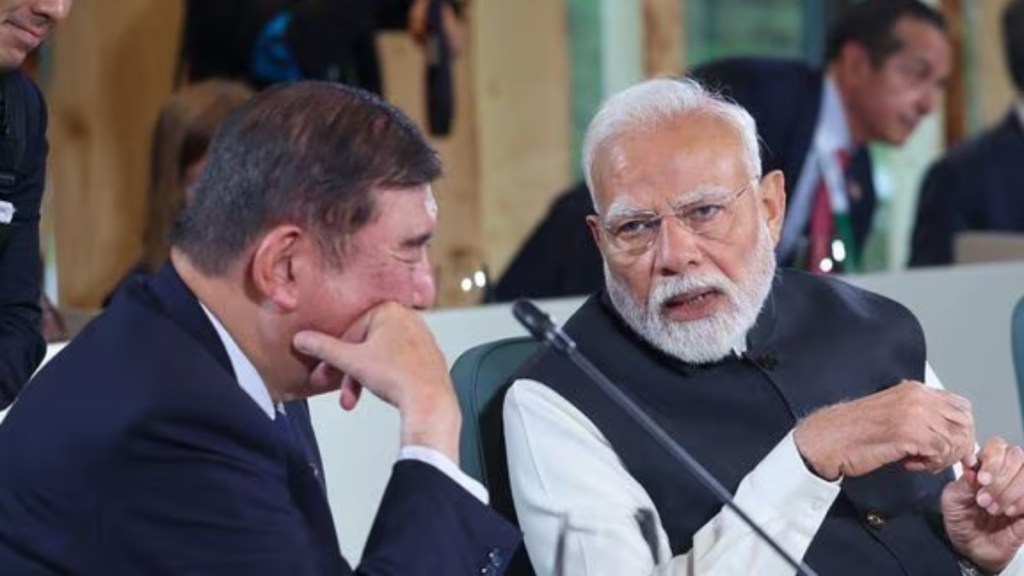Prime Minister Narendra Modi is set to leave for Tokyo tonight to attend the 15th India-Japan Annual Summit. After this, the PM will travel to Tianjin, China, to take part in the Shanghai Cooperation Organisation (SCO) leaders’ summit on August 31 and September 1.
The visit marks the first time PM Modi will step onto Chinese soil after seven years. His last visit was in June 2018 for the Qingdao SCO summit. The diplomatic push also comes barely days after Chinese Foreign Minister Wang Yi personally handed over an invitation from President Xi Jinping to Modi in New Delhi.
PM Modi’s Japan visit, what’s on agenda?
PM Modi’s first stop will be Tokyo, where he will arrive on August 29 at the invitation of Japanese Prime Minister Shigeru Ishiba. The two leaders will hold wide-ranging discussions as part of the 15th Annual Summit, a mechanism that has become a cornerstone of the bilateral relationship over the last decade.
The Ministry of External Affairs said that during the summit the two leaders will review the Special Strategic and Global Partnership covering defence and security cooperation, economic and trade ties, digital technology, innovation and connectivity, as well as cultural and people-to-people linkages. Regional and global issues will also feature prominently in the talks.
The visit will mark “a new momentum for the next decade” in bilateral relations. Several key Memoranda of Understanding (MoUs) and outcome documents are expected to be signed. The visit is aimed at taking stock of the tremendous progress made in political and economic relations and charting a roadmap for the next phase of growth, news agency ANI reported quoting Sibi George, India’s Ambassador to Japan.
Quad and Indo-Pacific security to be discussed
The role of the Quad grouping, comprising India, Japan, the United States and Australia, will feature prominently in PM Modi’s talks with Ishiba. The Quad has grown into a central pillar of Indo-Pacific diplomacy, with a focus on maritime security, supply chain resilience, emerging technologies, and disaster relief cooperation.
Ambassador George noted that the Quad has matured from an informal dialogue into a serious grouping with “a concrete agenda for promoting peace, stability, and prosperity in the Indo-Pacific region.” Japan and India are expected to align their positions on several strategic challenges, especially in the context of China’s growing regional influence.
PM Modi’s China visit, what’s on agenda?
Following the Japan leg, PM Modi will fly to Tianjin for the SCO leaders’ summit. This visit comes amid efforts by both countries to normalise strained ties. The last major visit was in 2018 when Modi attended the Qingdao summit.
The India-China relationship has been under stress since the border standoff in eastern Ladakh began in 2020. The move to restart direct flights, give visas to Chinese nationals again, reopen border trade and allow the Kailash Mansarovar Yatra after five years is seen as a step towards normalising relations.
PM Modi to attend SCO summit in China
India is expected to focus on counter-terrorism, regional stability, energy security, and connectivity. Meanwhile, it became a full member of the SCO in 2017 and led the group in 2022-23. New Delhi will likely stress the importance of protecting its sovereignty in connectivity projects, while also seeking more economic ties with Central Asia.
The SCO summit will allow PM Modi to meet leaders from China, Russia, and Central Asian countries, offering opportunities for one-on-one discussions. With changing global dynamics, India is expected to use the SCO to protect its regional interests and maintain dialogue with Beijing and Moscow.
Semiconductors and bullet train project
According to the Japanese Foreign Ministry, the two leaders will also travel to Miyagi Prefecture on August 30 to tour the Tohoku Shinkansen plant in Sendai.
During the visit, both sides are expected to sign an agreement for the transfer of Japanese E-10 coaches to India in 2030, as part of the Mumbai-Ahmedabad High Speed Rail project, popularly known as the ‘Bullet Train’.
US-China trade talks put spotlight on Soybean tariffs
Grain traders around the world are keeping a close eye on the talks between the US and China about farm tariffs, as the outcome will be very important for American farmers who want to sell more to their biggest export market. This week, senior Chinese trade negotiator Li Chenggang is in Washington for discussions with US officials.
Agriculture matters a lot because farm products are America’s biggest exports to China. President Donald Trump has already asked Beijing to buy four times more soybeans. But there’s still concern since China did not fully deliver on its promises in the 2020 “Phase 1” trade deal, when it had agreed to buy $200 billion more US goods in two years. Last year alone, China bought $29.25 billion worth of American farm goods, making it a key market. For Beijing, increasing purchases could also be a way to reduce the large trade gap with the U.S., which Trump often points to when defending tariffs.

